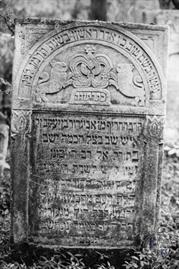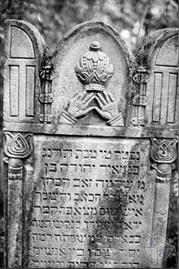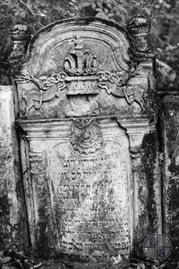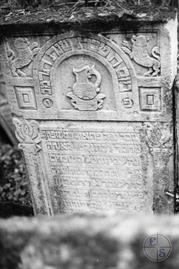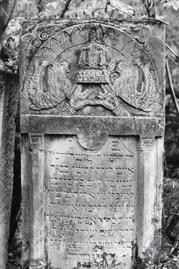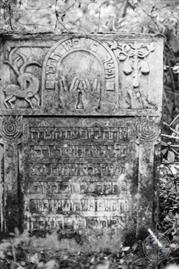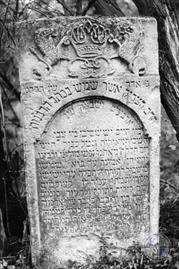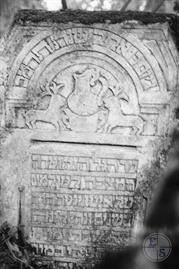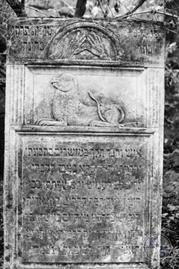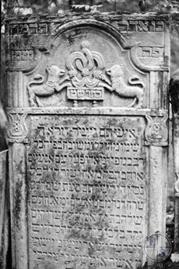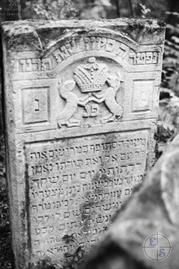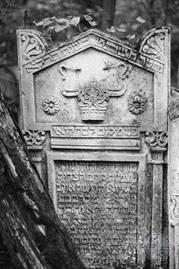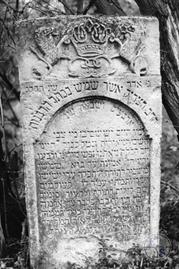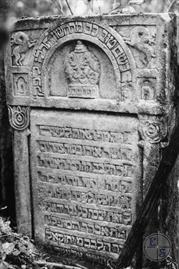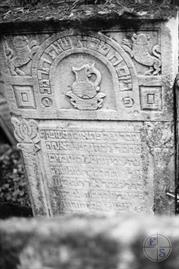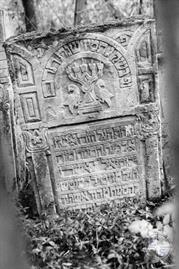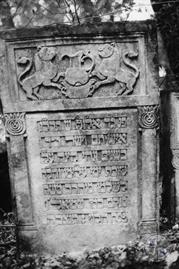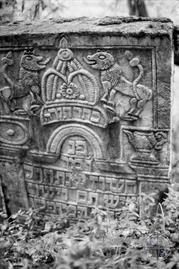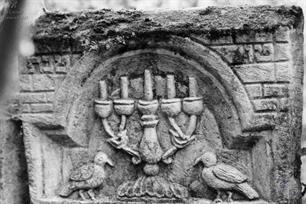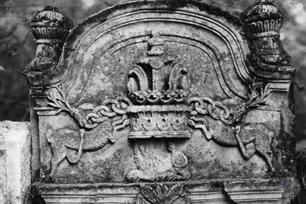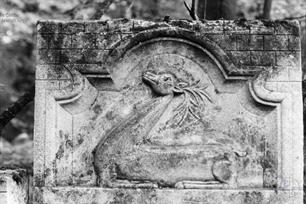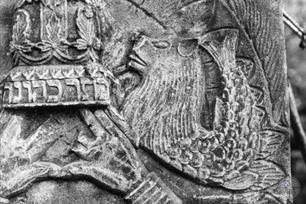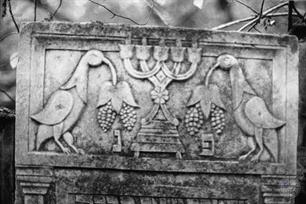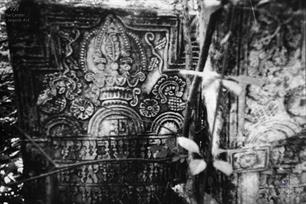Shchyrets
Lviv district, Lviv region
Year - Total Population - Jews
1764 - ? - 567
1880 - 1,754 - 1,385
1890 - 1,682 - 1,303
1900 - 1,730 - 1,324
1910 - 1,614 - 1,264
1921 - 936 - 712
1931 - ? - 850
1764 - ? - 567
1880 - 1,754 - 1,385
1890 - 1,682 - 1,303
1900 - 1,730 - 1,324
1910 - 1,614 - 1,264
1921 - 936 - 712
1931 - ? - 850
Sources:
- Pinkas Hakehillot Polin: Encyclopedia of Jewish Communities, Poland, Volume II, page 520-521, published by Yad Vashem, Jerusalem. Translated by Leon Chameides, JewishGen, Inc.
Photo:
- Center for Jewish art. Jewish cemetery in Shchyrets
- Pinkas Hakehillot Polin: Encyclopedia of Jewish Communities, Poland, Volume II, page 520-521, published by Yad Vashem, Jerusalem. Translated by Leon Chameides, JewishGen, Inc.
Photo:
- Center for Jewish art. Jewish cemetery in Shchyrets
A fortress was present inSzczerzec as early as the 12th century. The King approved the establishment of Szczerzec as a Royal settlement and granted it the status of a town in 1397. The Tartars destroyed the town in 1516 and in 1620 and in 1656 the Swedes caused much destruction. The Black Plague, which started in Szczerzec in 1570, caused many casualties.
In the 18th century, the town became the private property of the nobility. After all these disasters, which almost completely emptied the town of its inhabitants, the road to its recovery began once again. In the 17th century, sulfur and gypsum were mined in its vicinity and continued throughout the existence of the community.
In 1780 about a dozen German Mennonite families settled there but abandoned it in the second half of he 19th century. The town grew during the Austrian period but many of its houses were destroyed during the First World War. Its population declined by 40% and it did not return to its former size until the Second World War.
Individual Jews are mentioned in documents from Szczerzec as early as 1629 but the Jewish settlement of Szczerzec developed during the period when the nobility owned it.
In 1765, Jews owned 2 houses in the market square (Christians owned 5 houses) and in the streets of the town, Jews owned 30 houses compared to Christians who owned 46 houses. In addition, 411 houses in the suburbs of Szczerzec were in the hands of non-Jewish inhabitants engaged in farming. Jews concentrated on trade, while Christians performed labor in that era. Four butchers are mentioned in that time.
During the 19th century Jews became the absolute majority of the town's population and this situation did not change until the Second World War. Trade, mainly petty trade and peddling, continued to be the most important means of earning a livelihood for Jews, and, in the 19th and 20th centuries, professional work.
At the end of the 19thand in the beginning of the 20th century, the town had two Jewish physicians and one Jewish lawyer. One family (4 people) made their living by farming and in 1928 they owned 22 dunams of land and two head of cattle.
Until the beginning of the 18th century, the Szczerzec kehilla [Jewish Community] was affiliated with the kehilla of Komarno but in 1717, the state of Reissen board voted to grant the Szczerzec kehilla independence. The leaders of Komarno unsuccessfully protested this decision as late as 1754.
In 1770, the Rabbi of Szczerzec was Rabbi Leibush the son of Reb Ephraim to be followed by his son, Rabbi Ephraim Yizchak, who then became the dayan [head judge] and teacher in Przemyњl in 1823 and died there in 1843. Rabbi Ephraim wrote two eassays, “The First Mishana” and “The Last Mishana”. Rabbi Eliezer Halevi Ish Horowitz (the son of Rabbi Yitzchak, the Head of the Beth Din of Horochov, Brody, and others) was Rabbi in Szczerzec for many years.
Towards the end of his reign, which lasted for almost 70 years, he moved to Zaloszcze [?sp]. It appears that the next Rabbi was Rabbi Benjamin Wolff Schцnblum who also served the community for many years, until WW II.
After Jews became the absolute majority of the town's population, they also became the majority on the Town Council from the time when voting was initiated under the Austrians in 1878, throughout the period of Polish rule, and until the eve of the Second World War.
The Mayor was also a Jew and often was both Mayor and Head of the Kehilla , for example in 1934 Jews had 9 seats on the Town Council, Poles had 2 seats, and Ukrainians had 1 seat.
Zionist organizations, which had a great influence in the town, were organized in the years 1902-1904 (Shmuel Luft, the Mayor as well as Head of the Kehilla, was a Zionist).
The organization, Poalei Zion, was established in 1913 but its numbers were small.
The Zionists established a supplementary Hebrew School in 1911, which began with 45 male students but afterwards had only 25 female students.
In the 18th century, the town became the private property of the nobility. After all these disasters, which almost completely emptied the town of its inhabitants, the road to its recovery began once again. In the 17th century, sulfur and gypsum were mined in its vicinity and continued throughout the existence of the community.
In 1780 about a dozen German Mennonite families settled there but abandoned it in the second half of he 19th century. The town grew during the Austrian period but many of its houses were destroyed during the First World War. Its population declined by 40% and it did not return to its former size until the Second World War.
Individual Jews are mentioned in documents from Szczerzec as early as 1629 but the Jewish settlement of Szczerzec developed during the period when the nobility owned it.
In 1765, Jews owned 2 houses in the market square (Christians owned 5 houses) and in the streets of the town, Jews owned 30 houses compared to Christians who owned 46 houses. In addition, 411 houses in the suburbs of Szczerzec were in the hands of non-Jewish inhabitants engaged in farming. Jews concentrated on trade, while Christians performed labor in that era. Four butchers are mentioned in that time.
During the 19th century Jews became the absolute majority of the town's population and this situation did not change until the Second World War. Trade, mainly petty trade and peddling, continued to be the most important means of earning a livelihood for Jews, and, in the 19th and 20th centuries, professional work.
At the end of the 19thand in the beginning of the 20th century, the town had two Jewish physicians and one Jewish lawyer. One family (4 people) made their living by farming and in 1928 they owned 22 dunams of land and two head of cattle.
Until the beginning of the 18th century, the Szczerzec kehilla [Jewish Community] was affiliated with the kehilla of Komarno but in 1717, the state of Reissen board voted to grant the Szczerzec kehilla independence. The leaders of Komarno unsuccessfully protested this decision as late as 1754.
In 1770, the Rabbi of Szczerzec was Rabbi Leibush the son of Reb Ephraim to be followed by his son, Rabbi Ephraim Yizchak, who then became the dayan [head judge] and teacher in Przemyњl in 1823 and died there in 1843. Rabbi Ephraim wrote two eassays, “The First Mishana” and “The Last Mishana”. Rabbi Eliezer Halevi Ish Horowitz (the son of Rabbi Yitzchak, the Head of the Beth Din of Horochov, Brody, and others) was Rabbi in Szczerzec for many years.
Towards the end of his reign, which lasted for almost 70 years, he moved to Zaloszcze [?sp]. It appears that the next Rabbi was Rabbi Benjamin Wolff Schцnblum who also served the community for many years, until WW II.
After Jews became the absolute majority of the town's population, they also became the majority on the Town Council from the time when voting was initiated under the Austrians in 1878, throughout the period of Polish rule, and until the eve of the Second World War.
The Mayor was also a Jew and often was both Mayor and Head of the Kehilla , for example in 1934 Jews had 9 seats on the Town Council, Poles had 2 seats, and Ukrainians had 1 seat.
Zionist organizations, which had a great influence in the town, were organized in the years 1902-1904 (Shmuel Luft, the Mayor as well as Head of the Kehilla, was a Zionist).
The organization, Poalei Zion, was established in 1913 but its numbers were small.
The Zionists established a supplementary Hebrew School in 1911, which began with 45 male students but afterwards had only 25 female students.
After the town recovered from the destruction of the First World War (during the first years after the war, the Joint was assisted in the reconstruction), the local Zionist Organization developed and a number of organizations were established including Achva, Hashachar, and Beithar (in 1930).
In addition to the organizations, there were a library, a drama club, and in 1927 a community center was made possible through the generosity of Yaakov Gelbard, the then Mayor and Head of the Kehilla.
In 1930 the supplementary Hebrew school was reopened once again, this time under the auspices of the Tarbuth organization. About 90 students attended this school while they received their general education in the Public School, which had 7 classes.
The General Zionists and the Revisionists had a great influence in Szczerzec. On average about 100 shekalim were sold for the Zionist congresses. The Zionists were a majority on the Kehilla Council as well as on the Town Council. In elections to the Sejm, Szczerzec gave most of its votes to the National Zionist list (in 1922 a total of 345 Jews voted with 315 for the Zionist list).
Even at the sunset of its existence, the Jewish community in Szczerzec was hailed in all the communities in Galicia. It was said that the Town Council interrupted their meetings when the time arrived to say the mincha and maariv prayers and then and there prayed with a minyan.
We don't have information about the Jews of Szczerzec during the Second World War except for a few facts about the destruction of the community. In August 1942 about 180 Jews were sent from Szczerzec to Bуbrka. The remaining Jews of Szczerzec were sent to the extermination camp, Belrzec, on November 29th or 30th, 1942.
In addition to the organizations, there were a library, a drama club, and in 1927 a community center was made possible through the generosity of Yaakov Gelbard, the then Mayor and Head of the Kehilla.
In 1930 the supplementary Hebrew school was reopened once again, this time under the auspices of the Tarbuth organization. About 90 students attended this school while they received their general education in the Public School, which had 7 classes.
The General Zionists and the Revisionists had a great influence in Szczerzec. On average about 100 shekalim were sold for the Zionist congresses. The Zionists were a majority on the Kehilla Council as well as on the Town Council. In elections to the Sejm, Szczerzec gave most of its votes to the National Zionist list (in 1922 a total of 345 Jews voted with 315 for the Zionist list).
Even at the sunset of its existence, the Jewish community in Szczerzec was hailed in all the communities in Galicia. It was said that the Town Council interrupted their meetings when the time arrived to say the mincha and maariv prayers and then and there prayed with a minyan.
We don't have information about the Jews of Szczerzec during the Second World War except for a few facts about the destruction of the community. In August 1942 about 180 Jews were sent from Szczerzec to Bуbrka. The remaining Jews of Szczerzec were sent to the extermination camp, Belrzec, on November 29th or 30th, 1942.
Jewish cemetery in Shchyrets, 1989

- Home
- Shtetls
- Vinnytsia region
- Volyn region
- Dnipro region
- Donetsk region
- Zhytomyr region
- Zakarpattia region
- Zaporizhzhia region
- Ivano-Frankivsk region
- Kyiv region
- Kropyvnytskyi region
- Luhansk region
- Lviv region
- Mykolayiv region
- Odessa region
- Poltava region
- Rivne region
- Sumy region
- Ternopil region
- Kharkiv region
- Kherson region
- Khmelnytskyi region
- Chernihiv region
- Chernivtsi region
- Cherkasy region
- Crimea
- Synagogues
- Cemeteries
- Objects & guides
- Old photos
- History
- Contact
Jewish towns of Ukraine
Jewish towns of Ukraine
My shtetl
My shtetl
Donate
